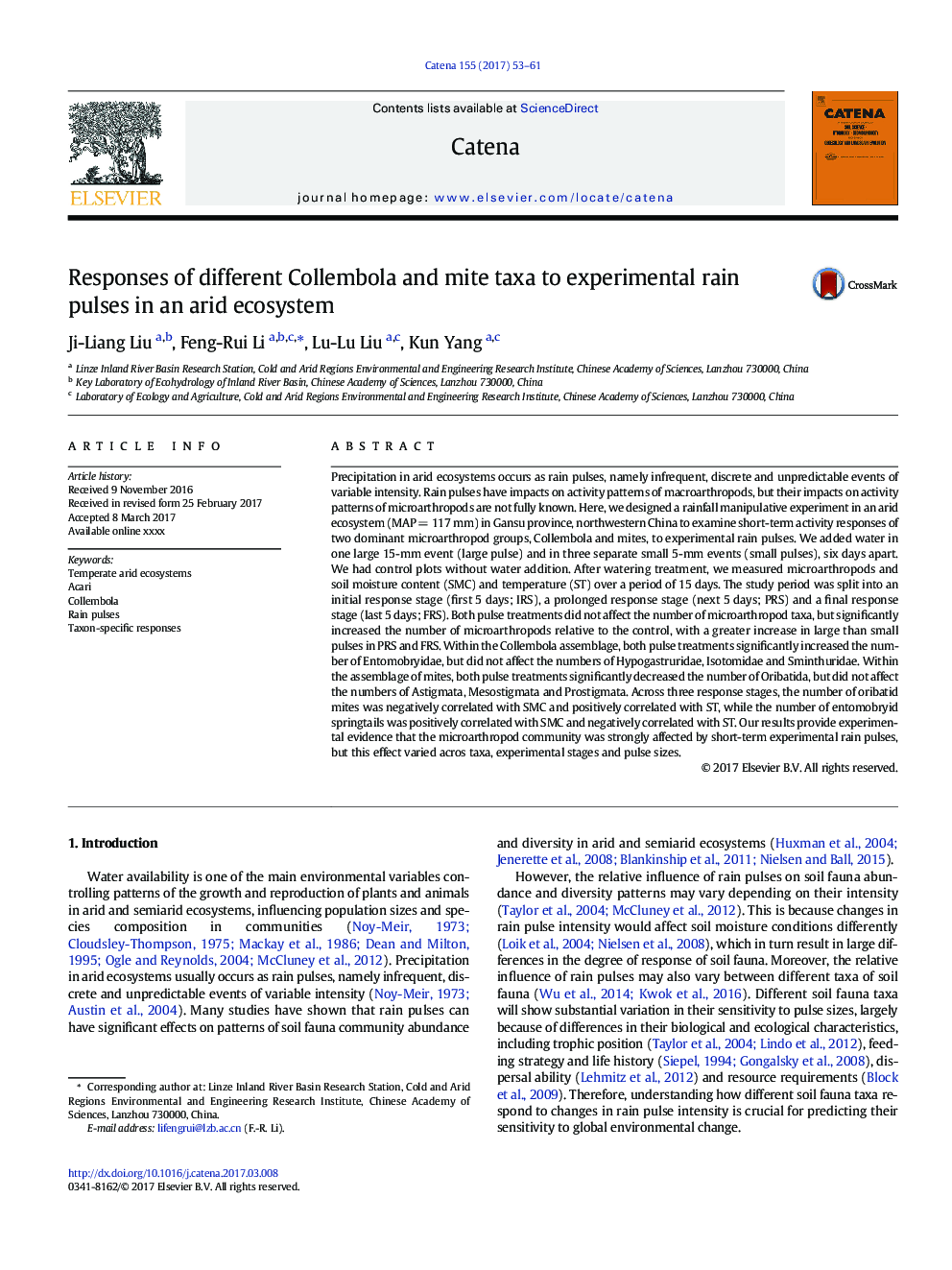| Article ID | Journal | Published Year | Pages | File Type |
|---|---|---|---|---|
| 5770125 | CATENA | 2017 | 9 Pages |
Abstract
Precipitation in arid ecosystems occurs as rain pulses, namely infrequent, discrete and unpredictable events of variable intensity. Rain pulses have impacts on activity patterns of macroarthropods, but their impacts on activity patterns of microarthropods are not fully known. Here, we designed a rainfall manipulative experiment in an arid ecosystem (MAPÂ =Â 117Â mm) in Gansu province, northwestern China to examine short-term activity responses of two dominant microarthropod groups, Collembola and mites, to experimental rain pulses. We added water in one large 15-mm event (large pulse) and in three separate small 5-mm events (small pulses), six days apart. We had control plots without water addition. After watering treatment, we measured microarthropods and soil moisture content (SMC) and temperature (ST) over a period of 15Â days. The study period was split into an initial response stage (first 5Â days; IRS), a prolonged response stage (next 5Â days; PRS) and a final response stage (last 5Â days; FRS). Both pulse treatments did not affect the number of microarthropod taxa, but significantly increased the number of microarthropods relative to the control, with a greater increase in large than small pulses in PRS and FRS. Within the Collembola assemblage, both pulse treatments significantly increased the number of Entomobryidae, but did not affect the numbers of Hypogastruridae, Isotomidae and Sminthuridae. Within the assemblage of mites, both pulse treatments significantly decreased the number of Oribatida, but did not affect the numbers of Astigmata, Mesostigmata and Prostigmata. Across three response stages, the number of oribatid mites was negatively correlated with SMC and positively correlated with ST, while the number of entomobryid springtails was positively correlated with SMC and negatively correlated with ST. Our results provide experimental evidence that the microarthropod community was strongly affected by short-term experimental rain pulses, but this effect varied acros taxa, experimental stages and pulse sizes.
Keywords
Related Topics
Physical Sciences and Engineering
Earth and Planetary Sciences
Earth-Surface Processes
Authors
Ji-Liang Liu, Feng-Rui Li, Lu-Lu Liu, Kun Yang,
